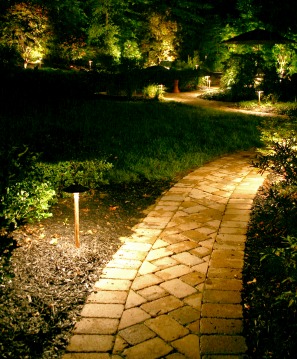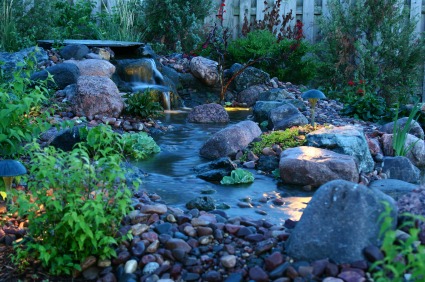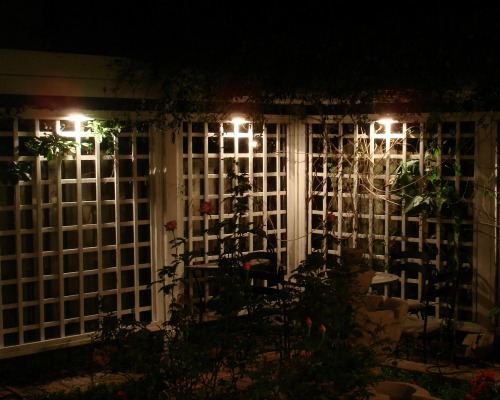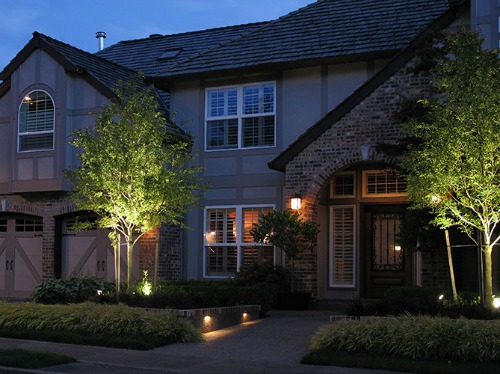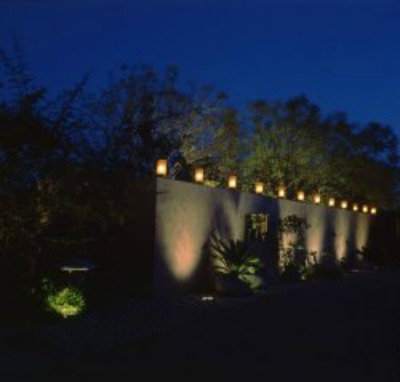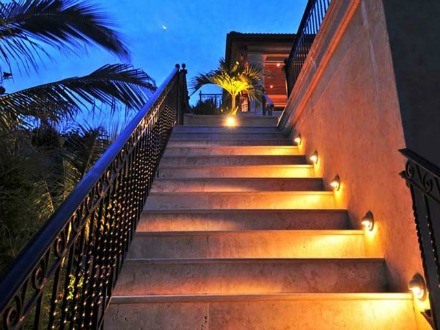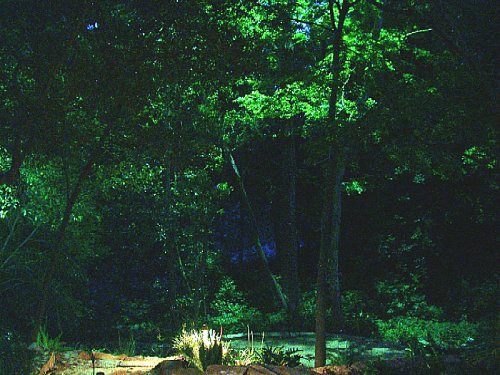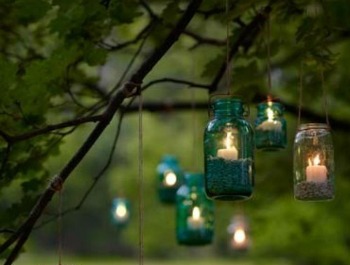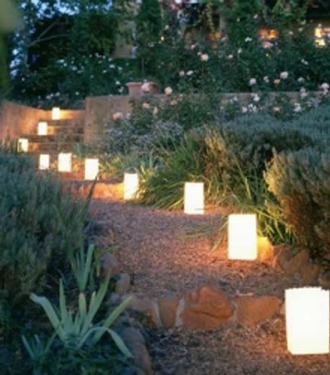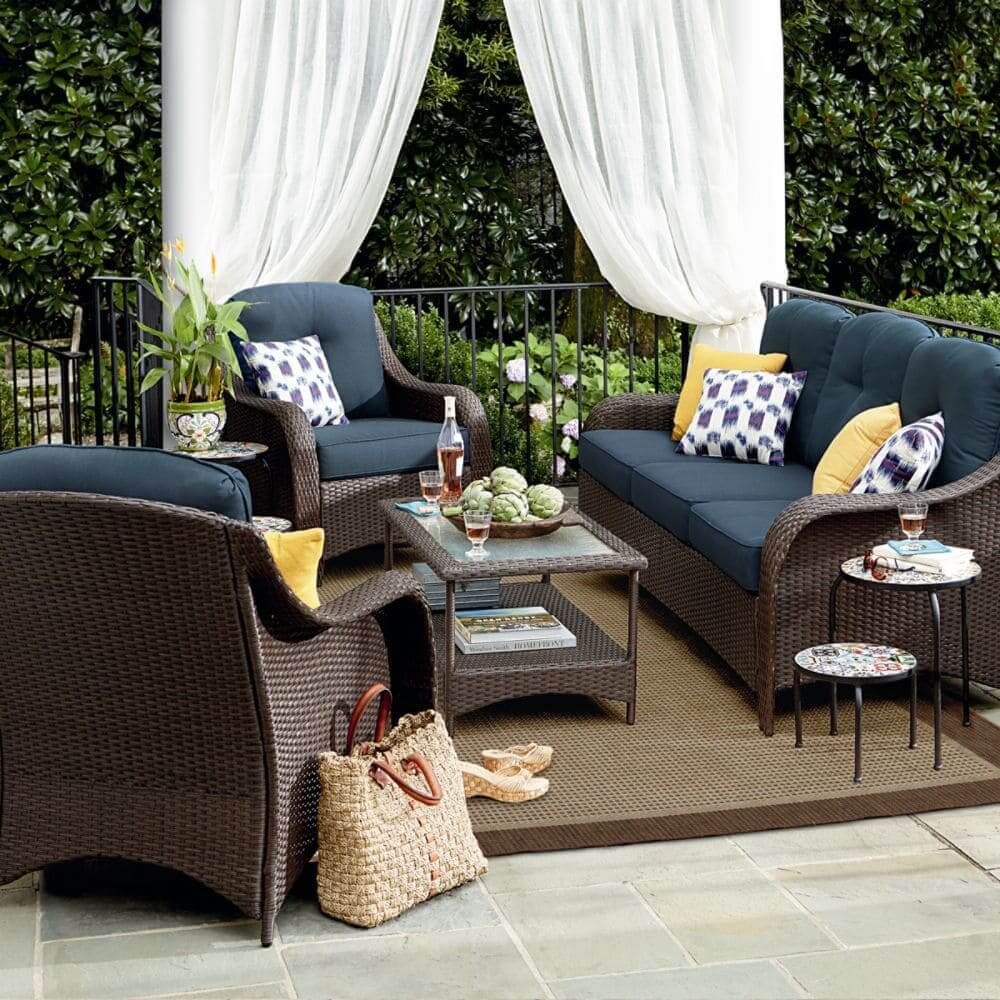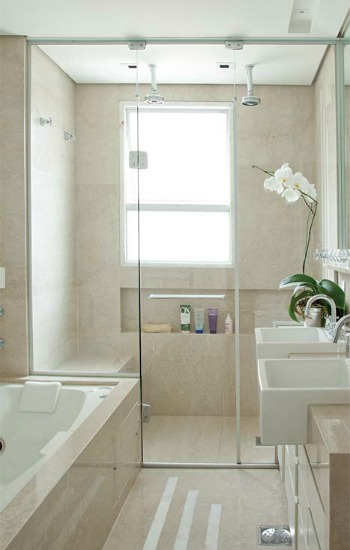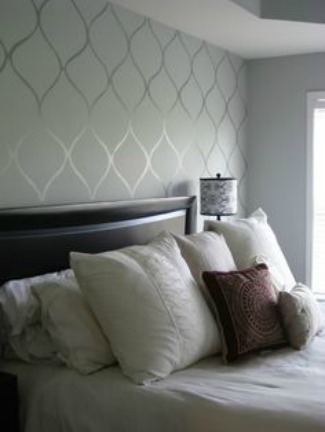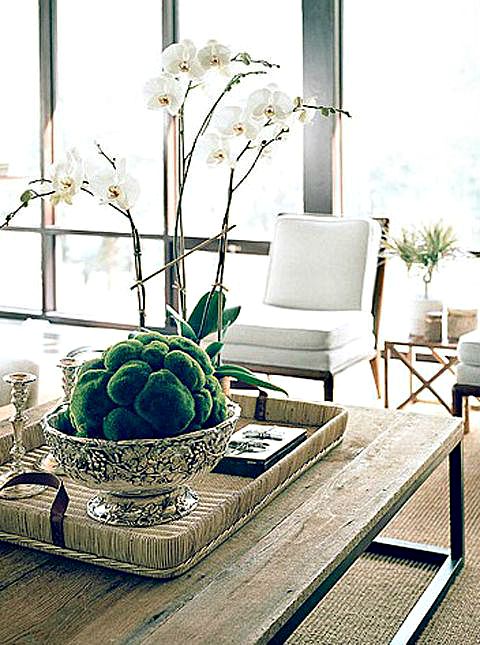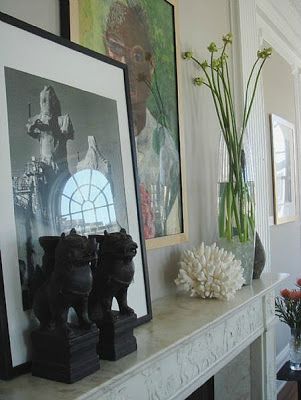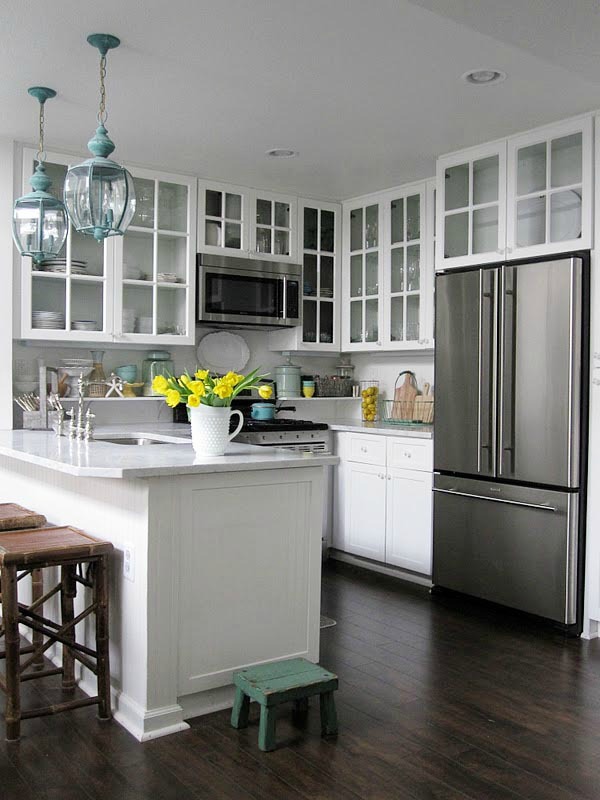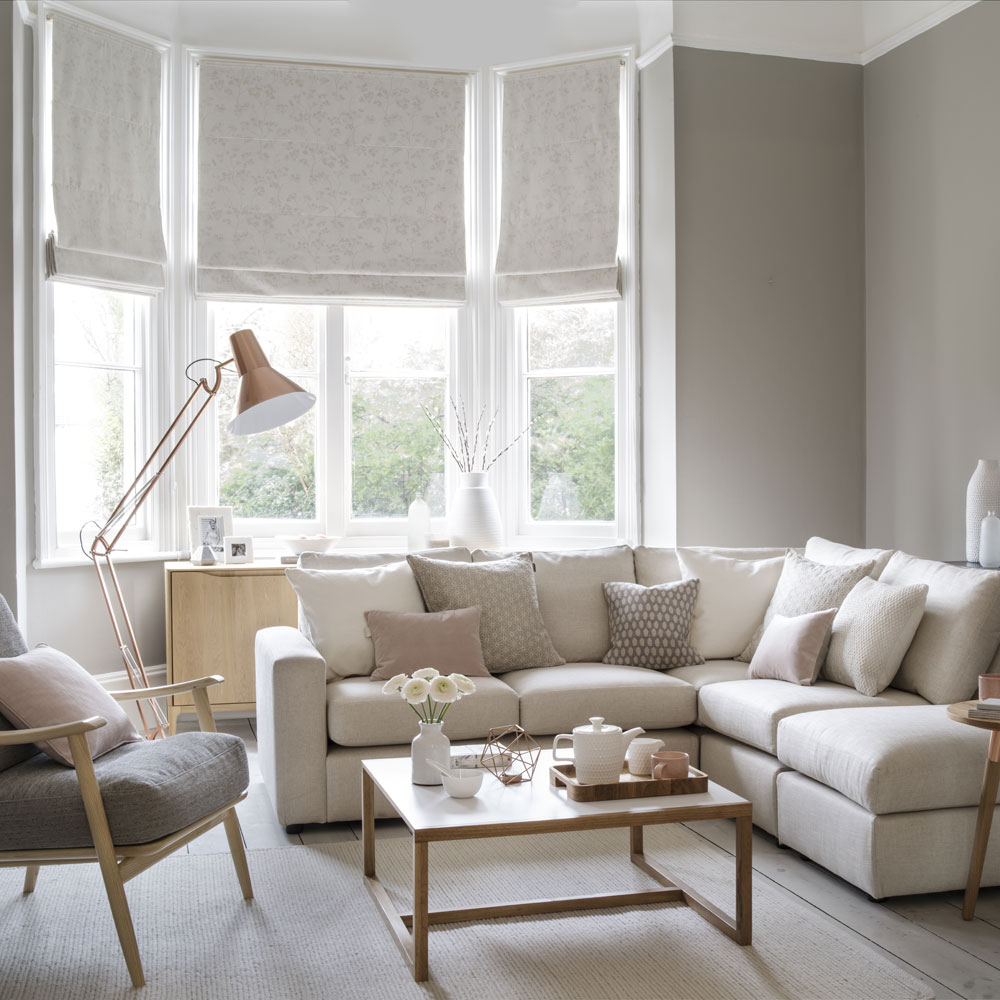Outdoor Lighting that will Help Sell Your Home
For a faster, more profitable home sale
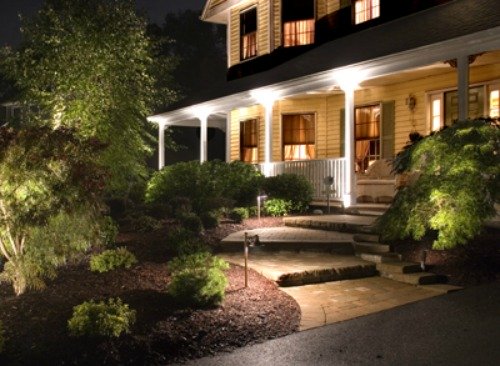 Landscape lighting will highlight the positive features of your home exterior and welcome buyers to your door.
Landscape lighting will highlight the positive features of your home exterior and welcome buyers to your door.Outdoor lighting can make your home stand out at night by accentuating the positive features of your house and garden. It'll surely attract the attention of those “drive-by” buyers who enjoy cruising through neighborhoods at night to check out houses before committing to a viewing.
Landscape lighting will also bring added value to your home by increasing curb appeal and adding a measure of security by protecting against intruders and falls.
Outdoor landscape lighting
A well-lit home is essential for safety, security, function, and aesthetic reasons. Be sure to analyze the landscape and architecture of your home in order to create the most effective outdoor lighting. A well-planned outdoor area will include a variety of lighting types for different functions.
Ideally, you should have enough light along stairways, steps, and paths for safety reasons, even if it's just one row of lights along one side.
Landscape lighting will extend the time you can enjoy the outdoors and will add interest and beauty to your home design. It can be subtle or dramatic, depending on your taste.
If finances are limited, simply adding a few lights to the front of the house can increase the curb appeal of your home.
Outdoor landscape lighting ideas
- A well-lit front entry is always welcoming to visitors. Flank your front door or garage with wall sconce lighting, or hang a decorative lantern off to one side.
- Porches or inset entries may need additional lighting. Recessed lighting fixtures will brighten up these areas.
- Double door entries look better with two outdoor lighting fixtures, one on each side. A small porch with a single door will benefit from a single light fixture, an overhead or recessed lighting fixture.
- Be sure to match the style of the outdoor lighting fixtures to the style of your home. See room styles.
- House numbers should be well lit so they can be seen from the curb. Or, light up the address on your mailbox by installing a post light.
- Sidewalk or path lights will accentuate the entrance to your home, guide people safely to your front door and draw them into your home.
- Line the driveway with post lights or ground lights that can be inserted into brick or stonework.
- Install LED rail lighting on a deck, or light up the newel posts.
- Place outdoor landscape lighting where it will show off your garden.
- Water features, like fountains, fish ponds or bubbling brooks look very elegant with night lighting.
- If your landscape is bare, display lighted planters on each side of the entry or along the sidewalk.
Different styles of outdoor landscape lighting
Downlighting
Downlighting is used to highlight objects below the light source. It is similar to moon lighting, except it offers brighter light.
Downlighting is typically placed up high, for instance; in a tree, the eaves of a house, in the top of a trellis, a patio, or gazebo.
Downward flood lighting is often used to illuminate large spaces for safety and security reasons.
Uplighting
Up-lighting is used to light anything above the light source. Landscape up-lights are usually mounted on or below the ground.
This form of night-scaping is commonly used to draw attention to beautiful trees, interesting architectural features, garden walls, fences, or the textures of stone or brick on the exterior of a home.
Place one to two fixtures at the base of the tree and point upwards to show off the trunk of the tree.
Up-lighting creates an ambient light (see interior lighting) for added security. It is also effective at creating drama with shadows on walls. For instance; shadows created on bare tree branches in the winter can often have an eerie skeletal effect, so beware of what you're trying to highlight.
Up-light fixtures inserted in the ground among tall shrubs, trees, bamboo and grasses presents a luminescent light. Floodlights, spotlights, and bollards work well in up-lighting. Low-voltage light fixtures with halogen or led bulbs are commonly used.
Back or silhouette lighting
Backlighting is used to shine light behind objects to create a silhouetted effect. Most of the subject will be in shadow.
A spotlight is placed behind the subject feature, but pointed toward an adjacent wall. Doing this illuminates the backdrop and outlines the feature.
Be wary of backlighting certain garden sculptures; backlighting can turn a charming cupid statue into a creepy gargoyle!
Backlighting is also used to show off special plants and shrubs. Sometimes multiple fixtures are needed.
Front lighting
Front lighting focuses light directly ahead. Front light will fall on the the subject and fill in most all the details.
Accent or spot lighting
Accent lighting allows you to draw attention to and highlight a specific feature or object in the yard.
Accent lighting can be angled up or down to point at a garden sculpture, an architectural feature, trees, shrubbery, water features, or a stone wall.
Position your accent light a few feet away from the object; use low-voltage to prevent washing out the area around the object with too much light.
Underwater accent lighting is used to draw attention to water features like, fountains, koi ponds, and swimming pools.
Moon lighting
Moon lighting is a term used to describe lighting that mimics the soft natural effect of moon light.
To create this soft, lovely dappled effect, install multiple low-voltage lighting high up in your trees, pointing the light down through the branches and leaves.
Moon lighting is also an effective way to downlight a patio area.
Path lighting
Path lighting is used along the borders of sidewalks, driveways, patios, or garden paths for safety and aesthetic purposes. They come in several different forms; ground lighting or post lighting.
Don't go overboard by placing lights in "soldier-like" rows along each side of a path. Avoid that "runway" effect by placing path lights randomly. Give visitors enough visual cues to nudge them forward to their destination.
Placing path lights near flowers and plants will add texture and color to your nightscape.
Shadow lighting
In the same manner as silhouette lighting, shadowing focuses a light fixture toward a wall, but the fixture is positioned in front of the subject instead of behind. The light will be shining through the shrubs, creating a shadowy effect.
If a breeze is blowing, the effect can be very interesting, sometimes eerie.
Wash or graze lighting
Wash or graze lighting is used to diffuse light over vertical subjects, like garden walls or the side of a house. It is used to highlight and enhance the texture of surfaces.
Place lighting off to the side (abutting) your subject and point the light upward. The light will "wash" over the object, bringing out the textures and shadows.
Wall lights, floodlights, and spotlights can be used to achieve this soft glowing effect.
Selecting outdoor lighting
Low-voltage outdoor lighting
Low-voltage outdoor lighting offers a soft romantic light that works well for outdoor parties at night, for highlighting trees, artwork, gardens and most other landscape features. It's also very energy-efficient and safe.
Low-voltage lighting is safe, cost effective and easy to install. Low-voltage light kits can be found at any home improvement center.
LED lighting systems (light-emitting diodes) are an example of this form of night light. They are used more for effect and design rather than for lighting up an area. LED lighting emits a white and colored light. Low-voltage lighting systems work well for down-lighting.
High-voltage outdoor lighting
High-voltage lighting will light up more outdoor area than low-voltage, allowing you to extend your time spent outdoors. This type of lighting is typically used for safety and security reasons.
If you install high-voltage outdoor lighting, be sure that you place it where it won't glare into your neighbor’s windows at night! High-voltage lighting should be installed by a professional, because it may require putting in a new circuit system and must be up to code.
Outdoor solar lighting
Outdoor solar lighting provides a dim light that is typically inadequate at lighting up an entire landscape. Use them for spot effects along steps and paths. Solar lights come in yellow, silver or blueish light, providing a soft glow that creates an intimate sort of mood. The great thing about them is that you can just shove them into the ground and they're affordable! No wires to mess with and no need to turn them on and off. They will come on by themselves at night.
On the downside, solar lights will lose their intensity after a few hours.
Creative outdoor lighting ideas
- Insert small ground lights into large flower pots on the front porch.
- Float lit candles in a birdbath.
- Create an attractive outdoor room by setting your patio table with dinnerware, lanterns, candle-filled mason jars or candles. Home buyers LOVE outdoor spaces-- it's like adding extra square footage to a home, which can help you sell your home fast!
Line your front path with luminarias!
To make your own luminarias you will need:
Scissors, hole punching device, paper bags, sand, votives candles in glass containers.
- Light your luminarias right before an open house; home buyers will be charmed by this quaint custom of greeting visitors.
Common mistakes with landscape lighting
- Not hiding the light fixture. You want to see the EFFECT of the light fixture, not the fixture itself.
- Don't light ONLY the top of a staircase. Doing so you will cast a shadow on the steps, making it hard to see the stairs. Add lights at the bottom and top for safety.
Return from outdoor lighting to interior lighting
Return to home page
Updated 12-16-2022
